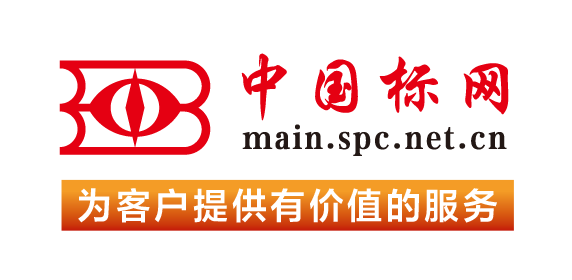【国外标准】 Standard Test Method for Sensory Analysis—Tetrad Test
本网站 发布时间:
2024-02-28
开通会员免费在线看70000余条国内标准,赠送文本下载次数,单本最低仅合13.3元!还可享标准出版进度查询、定制跟踪推送、标准查新等超多特权!
查看详情>>
适用范围:
5.1 The test method is effective for the following test objectives:5.1.1 To determine whether a perceptible difference results or a perceptible difference does not result, for example, when a change is made in ingredients, processing, packaging, handling, or storage; or5.1.2 To select, train, and monitor assessors.5.2 The test method itself does not change whether the purpose of the test is to determine that the products are perceptibly different versus that the products are sufficiently similar to be used interchangeably. Only the selected values of α, β, and δ or Pd change. If the objective of the test is to determine if there is a perceptible difference between two products, then initially the products are assumed to be indistinguishable (for example, HO: δ or Pd = 0) and the data are examined to determine if the assumption can be rejected (that is, conclude that the products are perceptively different). If the objective is to determine if the two products are sufficiently similar to be used interchangeably, then initially the products are assumed to be meaningfully different (for example, HO: δ or Pd > the value chosen to represent a meaningful difference) and the data are examined to determine if the assumption can be rejected (that is, conclude that the samples are sufficiently similar to be used interchangeably).5.3 The tetrad method involves the evaluation of four samples. When the products being tested cause excessive sensory fatigue, carryover, or adaptation, methods that involve the evaluation of fewer samples (same-different, triangle test, etc.) may be preferred.1.1 This test method covers a procedure for determining whether a perceptible sensory difference exists between samples of two products or to estimate the magnitude of the perceptible difference.1.2 This test method applies whether a difference may exist in a single sensory attribute or in several.1.3 This test method is applicable when the nature of the difference between the samples is unknown. The attribute(s) responsible for the difference are not identified.1.4 The tetrad test is more efficient statistically than the triangle test (Test Method E1885) or the duo-trio test (Test Method E2610).1.5 This standard does not purport to address all of the safety concerns, if any, associated with its use. It is the responsibility of the user of this standard to establish appropriate safety, health, and environmental practices and determine the applicability of regulatory limitations prior to use.1.6 This international standard was developed in accordance with internationally recognized principles on standardization established in the Decision on Principles for the Development of International Standards, Guides and Recommendations issued by the World Trade Organization Technical Barriers to Trade (TBT) Committee.
标准号:
ASTM E3009-23a
标准名称:
Standard Test Method for Sensory Analysis—Tetrad Test
英文名称:
Standard Test Method for Sensory Analysis—Tetrad Test标准状态:
Active-
发布日期:
-
实施日期:
出版语种:
- 推荐标准
- ASTM 51401-21 Standard Practice for Use of a Dichromate Dosimetry System
- ASTM 51956-21 Standard Practice for Use of a Thermoluminescence-Dosimetry System (TLD System) for Radiation Processing
- ASTM A1010/A1010M-24 Standard Specification for Higher-Strength Martensitic Stainless Steel Plate, Sheet, and Strip
- ASTM A1016/A1016M-24 Standard Specification for General Requirements for Ferritic Alloy Steel, Austenitic Alloy Steel, and Stainless Steel Tubes
- ASTM A105/A105M-24 Standard Specification for Carbon Steel Forgings for Piping Applications
- ASTM A1064/A1064M-24 Standard Specification for Carbon-Steel Wire and Welded Wire Reinforcement, Plain and Deformed, for Concrete
- ASTM A108-24 Standard Specification for Steel Bar, Carbon and Alloy, Cold-Finished
- ASTM A1080/A1080M-24 Standard Practice for Hot Isostatic Pressing of Steel, Stainless Steel, and Related Alloy Castings
- ASTM A1090/A1090M-19(2024) Standard Specification for Forged Rings and Hollows for Use as Base Plates in Power Transmission Structures
- ASTM A1115/A1115M-24 Standard Practice for Construction of Mechanically Stabilized Earth Walls with Inextensible Soil Reinforcement
- ASTM A1128-24 Standard Specification for Stainless Steel Shielded, Rubber Gasketed Couplings Having an Integral Restraint Feature for Joining Hubless Cast Iron Soil Pipes and Fittings Where External Restraint Is Required
- ASTM A179/A179M-24 Standard Specification for Seamless Cold-Drawn Low-Carbon Steel Heat-Exchanger and Condenser Tubes
- ASTM A234/A234M-24 Standard Specification for Piping Fittings of Wrought Carbon Steel and Alloy Steel for Moderate and High Temperature Service
- ASTM A242/A242M-24 Standard Specification for High-Strength Low-Alloy Structural Steel
- ASTM A249/A249M-24a Standard Specification for Welded Austenitic Steel Boiler, Superheater, Heat-Exchanger, and Condenser Tubes
 我的标准
我的标准 购物车
购物车 400-168-0010
400-168-0010














